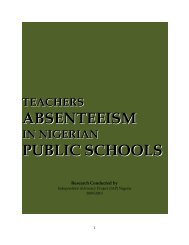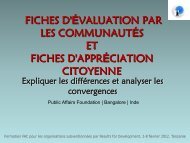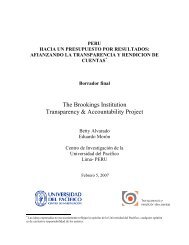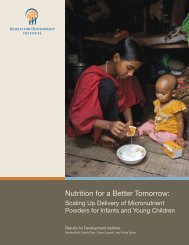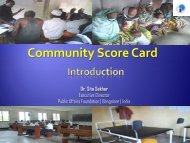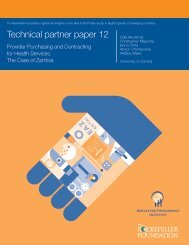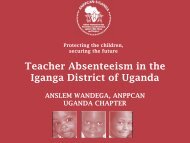CBMP Analytical Report Part 1 - Transparency and Accountability ...
CBMP Analytical Report Part 1 - Transparency and Accountability ...
CBMP Analytical Report Part 1 - Transparency and Accountability ...
Create successful ePaper yourself
Turn your PDF publications into a flip-book with our unique Google optimized e-Paper software.
Having agreed on the above, pre-testing was organized in Lilongwe districts to a few<br />
teachers, pupils <strong>and</strong> parents. The pre-testing experience provided final <strong>and</strong> practical<br />
input to the data collection tools. Actual Data Collection followed soon after input<br />
from the pre-testing exercise.<br />
2.3 Data Collection<br />
2.3.1 Individual Interviews<br />
The Study used r<strong>and</strong>om sampling (multistage <strong>and</strong> proportionate) techniques to keep<br />
up with the required number of respondents. To r<strong>and</strong>omly sample, all schools were<br />
listed <strong>and</strong> 10% was factored into the Z-Statistic which yielded 300 teachers sample<br />
size. Even though the population of teachers was not the same for all the selected<br />
districts, it was considered too low a sample to warrant Probability Proportional to<br />
Size, hence arbitrary number of 100 was agreed for each district. In the districts,<br />
zones were r<strong>and</strong>omly chosen as well [using the 10% factor] <strong>and</strong> r<strong>and</strong>om selection was<br />
being applied. After choosing the zones, the same factor formulae were being used to<br />
sample individual schools <strong>and</strong> teachers thereat. However, within the zones, the<br />
population of schools <strong>and</strong> teachers was not the same in all such that proportionate<br />
sampling was used (Probability Proportional to Size) to determine how many<br />
respondents should come from which zone <strong>and</strong> school. After confirming the<br />
numbers, teachers were chosen r<strong>and</strong>omly in each school. The Research Assistants<br />
then followed up to interview teachers in all sampled schools in each zone.<br />
2.3.2 Focus Group Discussions <strong>and</strong> Key Informant Interviews<br />
Focus Group Discussions were done with various groups within the zones <strong>and</strong> school,<br />
namely; School management Committee (SMC), Parent – Teachers Association (PTA)<br />
<strong>and</strong> pupils. The main key informants in the study were the Primary Education<br />
Advisors (PEA) <strong>and</strong> the District Education Management (DEM). The discussions were<br />
6




